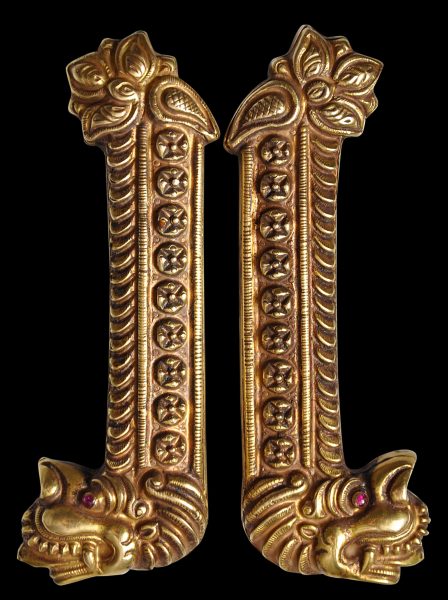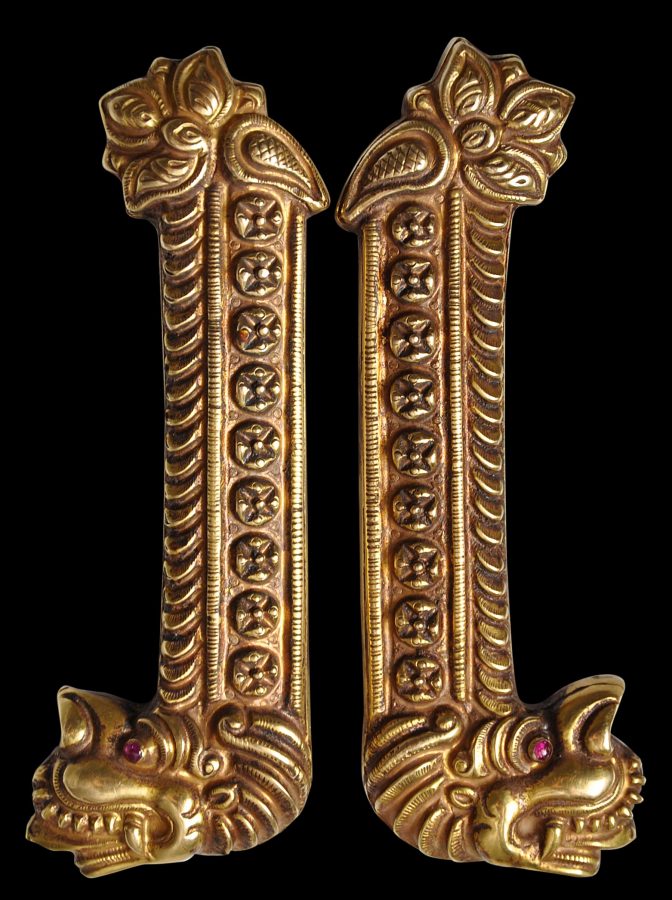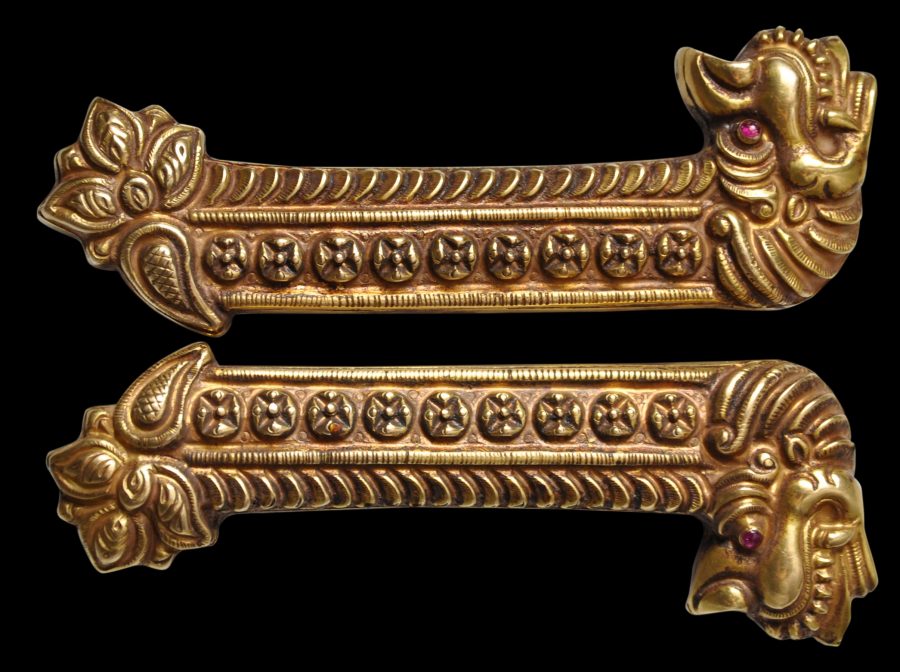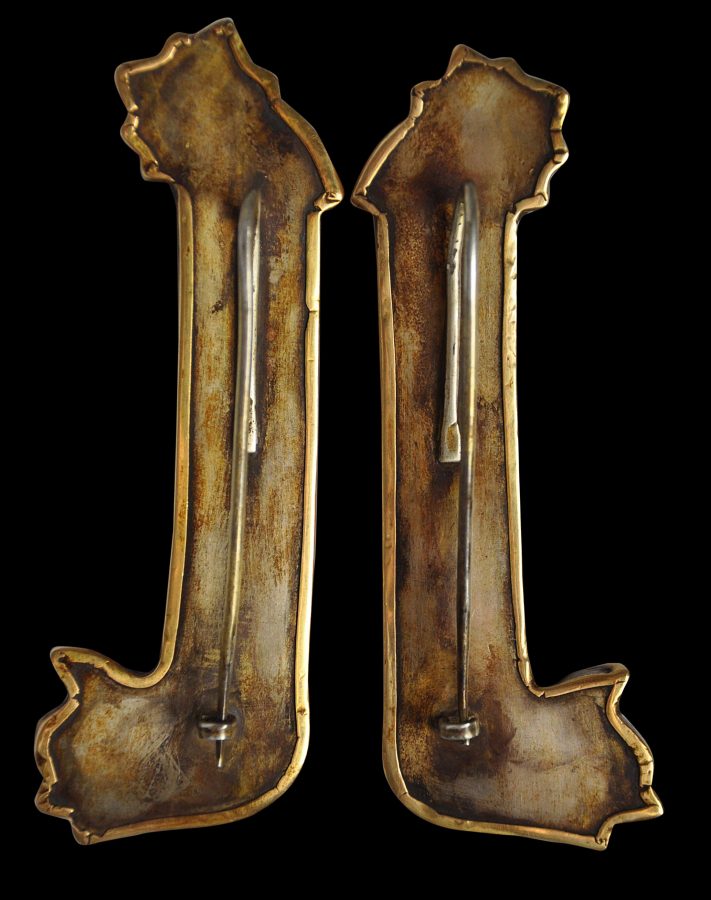Enquiry about object: 2610
South Indian Gold Ruby-Set Temple Ear Ornaments
South India 18th-19th century
length: 10cm, maximum width: 3.4cm, combined weight: 87g
Provenance
private collection. UK.
This superb pair of ear ornaments was commissioned to adorn a statue in southern India, most probably a temple in the Tamil Nadu temple town of Madurai. Each ornament is in the form of a makara-type figure with a fierce face, a long body and an extravagant tail.
They are of sheet gold, repoussed and chased. The gold most probably is filled with lac, and there is a white metal backing to the reverse.
A small ruby cabochon serves as the eye of each makara.
A large pin is attached to the reverse of each ornament to allow it to be fastened to adorn a statue.
A local aristocratic family almost certainly commissioned the manufacture of the ornaments for presentation to the temple. On festival days, Hindu statues in the temples were (and still are) adorned with gold and silver ornaments inset with precious stones. They were decorated according to their princely status.
Gold is imbued with a spiritual component in much of India. It is a symbol of the sun and also associated with Lakshmi, the goddess of wealth. Indians, rich or poor, all tried to have at least a small quantity of gold even if just a simple pair of earrings, for gold was coveted. And traditionally, Hindus would place a small piece of gold in the mouth of the departed as a symbol of the immortality of the soul and as payment to Yama, the god of death, for shepherding the soul to the hereafter (Bala Krishnan et al, 2005, p. 17).
According to Ollemans (2013), the kings of India were believed to be descended from the gods and they paid extravagant tribute to the deities by decorating them with gold and other precious materials. Deities were humanised: they were bathed and fed as if they were living beings, and adorned with all manner of jewellery. The more a deity wore, the more powerful and sacred it became. Once the deities were so embellished and humanised, then the kings ordered extravagant gold jewellery for themselves that mirrored the deities, thereby elevating themselves to the level of the deified. The demand for gold was immense and the goldfields of India were exhausted so that gold needed to be imported from beyond the subcontinent.
The ear ornaments are in excellent condition and have clear signs of age and use. See Aitken (2004, p. 123) for a smaller, less elaborate pair in the Susan Beningson collection, which are attributed to the 18th century.
References
Aitken, M.E., When Gold Blossoms: Indian Jewelry from the Susan L. Beningson Collection, Asia Society & Philip Wilson Publishers, 2004.
Bala Krishnan, U.R. et al, Icons in Gold: Jewelry of India from the Collection of the Musee Barbier-Mueller, Somogy, 2005.
Filliozat, J, Parures Divines du Sud de l’Inde, Publications de l’Institut Français d’Indologie, 1966.
Michell, G. (ed.), Temple Towns of Tamil Nadu, Marg Publications, 1993.
Ollemans, S., ‘Of gold, gods and men: jewellery in India’, in Arts of Asia, November-December 2013. :private collection, UK






